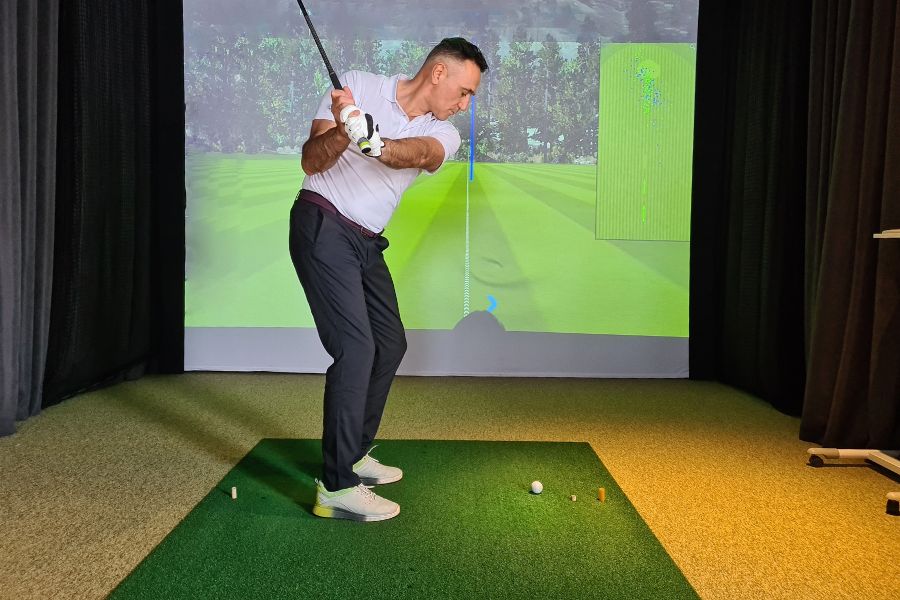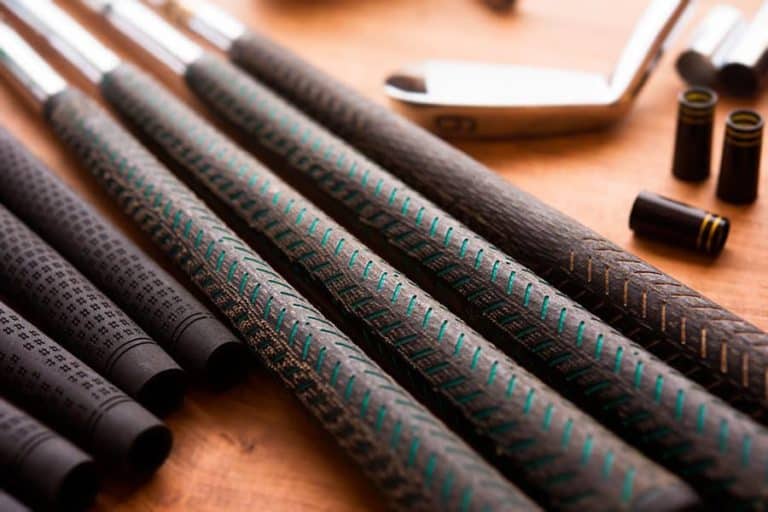How Does A Golf Simulator Work?

Technology is a dynamic process that has led to numerous advancements in a wide range of industries. Golf has also been enhanced by technology. A golf simulator is one such example. But how does it work? And what do you need to know about it?
I. How Does A Golf Simulator Work?
Golf simulator is an indoor virtual reality which consists of an enclosure and a screen that uses technology to assess your golf swing. It is intended to digitally replicate a golf course that can be used at any time.
A golf simulator provides detailed insights and analysis on every aspect of your swing. It helps you identify weaknesses and refine your skills. With advanced optics, sensitive software, and sensors, this modern equipment precisely replicates the feel of a genuine golf course.
Below is the process that explains how a golf simulator works:
- Start by stepping onto the mat in front of the screen which displays a virtual golf course.
- Simply stand facing the screen, position your ball on the designated spot, and take a swing using your real golf clubs and balls.
- Golf simulator will then track your shot’s path and analyze every detail of your swing.
- Once the ball is hit, the simulator will examine all the information generated by your shot. This involves details like ball speed, spin, angle, and various other factors.
- After analyzing, the golf simulator predicts your shot’s landing and displays it on the screen.
- The simulator provides diverse data points for over all performance views. It guides you through successive shots until you finish the hole.
II. Golf Simulator Components
Golf simulators function collectively. It is made up of several parts that come together to provide the desired outcome. Here are the major components of a golf simulator:
1. Computer and Simulation Software
The computer is the brain of the simulator. It runs simulation software, which processes data from the launch monitor and club sensors, calculates ball flight and other characteristics, and displays the simulated environment on the screen.
The simulation software generates the virtual golf environment and simulates the physics of ball flight. They also provide a variety of features, including different golf courses, practice modes, and game options.
2. Launch Monitor
The launch monitor in golf simulators is critical because it captures and analyzes critical data such as ball speed, launch angle, and spin rate. This technology delivers precise feedback on the swing mechanics of the player, assisting in skill enhancement and club fitting.
The launch monitor ensures that shots in the virtual environment are shown realistically, increasing the entire gaming experience.
3. Impact Screen or Projection Surface
In golf simulators, the impact screen or projection surface serves as the visual interface where simulated courses are projected. It displays the landing of the golf ball in a realistic manner.
Its high-quality design ensures realistic visualization of ball flight, which contributes to a real simulation experience.
4. Sensors
Sensors in golf simulators are one of the vital components. They are utilized to track more than simply the flight of the ball. It is also used to measure clubhead speed and impact angle.
III. What Other Components You Need To Set Up A Golf Simulator?
A few key pieces of equipment and a decent amount of room for a complete swing are required to use a golf simulator. The following are the basic requirements you need:
- Mat and impact net
- PC, phone, or tablet
- Decently spaced room for swings
IV. Different Types Of Golf Simulators
Different types of golf simulators include:
1. Photometric
Photometric golf simulators use advanced optical sensors and high-speed cameras to precisely measure and analyze various aspects of ball and club interaction. These systems deliver accurate data on clubhead speed, launch angle, and spin rate by concentrating on light measurements.
It is again categorized into a few systems, such as:
| System | Feature | Example |
| Stereoscopic | Captures the image from 2 different angles | GC2 |
| Triscopic | Uses 3 cameras to capture various angles | GC3 |
| Quadrascopic | Captures from 4 different angles, using 4 cameras | GCQuad |
2. Infrared
In order to determine the precise position of the clubhead, infrared simulators generate light signals. You can also use foam or plastic balls with infrared simulators since the ball itself is not measured.
Nevertheless, they frequently fall short of other systems in terms of effectiveness and dependability.
3. Radar
Radar-based simulators use Doppler radar technology to track the ball. The sensors of radar technology emit radiofrequency waves that help these simulators track the golf ball’s movement.
Radar is most effective outdoors due to its ability to track the ball post-contact. However, it can still be used indoors as long as there is sufficient space for the ball to travel freely during its flight. In addition, radar differs from photometric and infrared systems as it is not affected by ambient lighting because it depends on microwave signals.
The fact that radar simulators must be placed several feet behind the clubhead is one of their main disadvantages. It affects the posture, which can lead to a miscalculation of certain characteristics, such as location or club face orientation.
V. How Much Do Golf Simulators Cost?
Golf simulator costs vary based on features, brand, and technology. Basic setups that only require a launch monitor and some software may cost around $5,000–$10,000. The overall budget can be significantly influenced by the setup of your room.
You have the option to choose either basic or premium accessories like hitting mats and projection screens based on your preference or budget.
However, the cost of a golf simulator can vary based on what it offers.
Budget-friendly option offers: Simulators might offer only a limited selection of driving ranges and a few playable courses.
Costlier option offers: A simulator can offer a variety of gameplay options, including hundreds of courses, skill challenges, games, competitions, and additional features.
Also Read: Best Budget Golf Simulator: Our Top 10 Picks
VI. What Can A Golf Simulator Be Used For?
A golf simulator can be used for various purposes, such as:
- Skill development
- Playing whenever we want
- All weather practice
- Beginners friendly
- Data analysis of the ball
- Data analysis of clubs
- Entertainment
- Time efficient
- Practice
- Enhancing shots
- Golf events and parties
- Golf coaching
- Professional Training
- Competitive play
- Physical fitness
- Testing of a new club
- Entertainment
Conclusion
Golf simulators use advanced technology to recreate the golfing experience indoors. They carefully capture and analyze the golfer’s swing, converting it into a virtual game using high-speed cameras, sensors, and advanced algorithms.
FAQ’s
1. Where can I set up a golf simulator?
Golf simulators can be installed indoors such as the basement, garage or large living room.
2. What kind of shots can you take on a golf simulator?
You can practice everything on a golf simulator, full swing to course management to shot accuracy.
3. When is the best time to use a golf simulator?
Golf simulators can be used regardless of the weather. Golfers can use it when the weather prohibits them from practicing outside.








